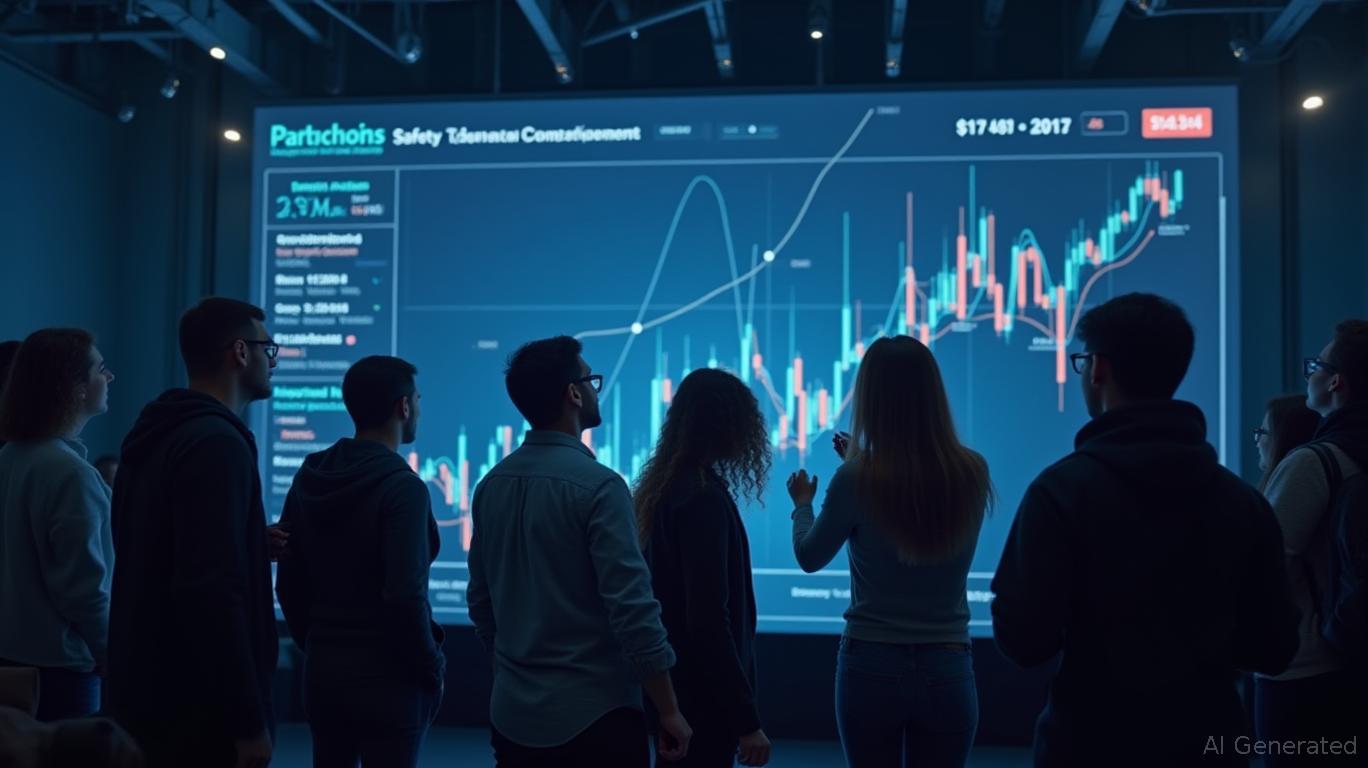ARK's Optimistic Move: Crypto Platform Rises While Defense Investments Decline
- ARK Invest boosted Bullish holdings via three ETFs, totaling $5M in new purchases, following an $8.27M October investment. - Bullish secured NY state licenses and expanded U.S. operations, now ranking top 10 in Bitcoin/Ethereum trading volume. - Leverage Shares launched a 2X Bullish ETF, highlighting its role as a "next-gen crypto marketplace" bridging traditional finance. - ARK divested defense/tech stocks ($12M total) while adding biotech positions, signaling strategic reallocation toward crypto and in
Cathie Wood's
This activity aligns with Bullish’s recent expansion in the U.S., highlighted by a launch event in New York where the company obtained both a BitLicense and a money transmission license from state regulators, allowing spot trading in 20 states. Supported by Block.one and led by CEO Tom Farley, Bullish has handled more than $1.5 trillion in trading volume since its global debut in 2021 and is now among the top 10 exchanges for
Interest in Bullish has also been highlighted by Leverage Shares by Themes, which introduced a 2X leveraged ETF focused on the stock,
ARK’s approach also involves selective selling. On October 31, the firm divested 41,892 shares of Palantir Technologies for $8.15 million and 42,865 shares of Kratos Defense for $3.78 million through ARKK, indicating a move away from defense and technology stocks, according to an
The market’s response to Bullish’s U.S. debut has been cautiously positive. The exchange’s regulatory achievements and partnerships with BitGo and Nonco have enhanced its reputation, though it still faces challenges in scaling and competing with established crypto exchanges. Analysts suggest that ARK’s continued investments may reflect strong long-term faith in Bullish’s potential to thrive in the rapidly changing digital asset sector, Cointelegraph noted.
Disclaimer: The content of this article solely reflects the author's opinion and does not represent the platform in any capacity. This article is not intended to serve as a reference for making investment decisions.
You may also like
Dogecoin News Update: DOGE at $0.18—Will Major Holders Exit or Accumulate as Its Future Remains Unclear
- Dogecoin (DOGE) faces volatility as whale activity intensifies, with major holders offloading 440M tokens in 72 hours, pushing price to critical $0.18 support level. - Mid-tier whales aggressively trim positions while top-tier wallets (100M+ DOGE) quietly increase holdings, signaling redistribution of market control. - Technical analysts highlight $0.18 as pivotal: a breakdown risks further declines, while a rebound could trigger rallies toward $0.26-$0.33 or even $1.70. - Broader crypto trends show Ethe

Stablecoins Lead Tokenized Deposits in Security and Integration Capabilities
- Experts argue stablecoins outperform tokenized deposits in safety, liquidity, and cross-chain interoperability, per Columbia Business School and Markets.com analyses. - Tokenized real-world assets (RWA) market could hit $2 trillion by 2028, driven by stablecoin liquidity and DeFi integration, Standard Chartered forecasts. - Banks resist yield-bearing stablecoins fearing market share loss, while U.S. regulatory clarity remains critical for sector growth, reports note. - Institutional adoption accelerates

Crypto Attacks Fall by 85%, Yet Specialists Caution About Emerging Dangers
- Crypto hacks dropped 85.7% in October 2025 to $18.18M, attributed to improved security measures and regulatory collaboration. - Tether/TRON's T3 FCU froze $300M in illicit assets, including $12.3M stolen USDT and $6M from romance scams. - BNB Chain strengthened security post-exploit, reporting 3.62M daily active addresses and $17.1B TVL growth. - Experts warn of emerging threats like state-sponsored hacking and MEV exploits despite reduced breach rates.
Climate change drives an increase in vultures, leaving cattle ranchers without any safe haven
- U.S. cattle farmers face growing threats from northward-migrating black vultures, protected under the Migratory Bird Treaty Act, which attack calves and disrupt operations. - Climate change and human activity enable vultures to thrive in colder regions, exploiting roadkill, farms, and suburban sprawl for reliable food sources. - Farmers employ non-lethal deterrents like adjusted calving schedules and vulture effigies, but legal protections limit population control options. - Experts warn of escalating hu
